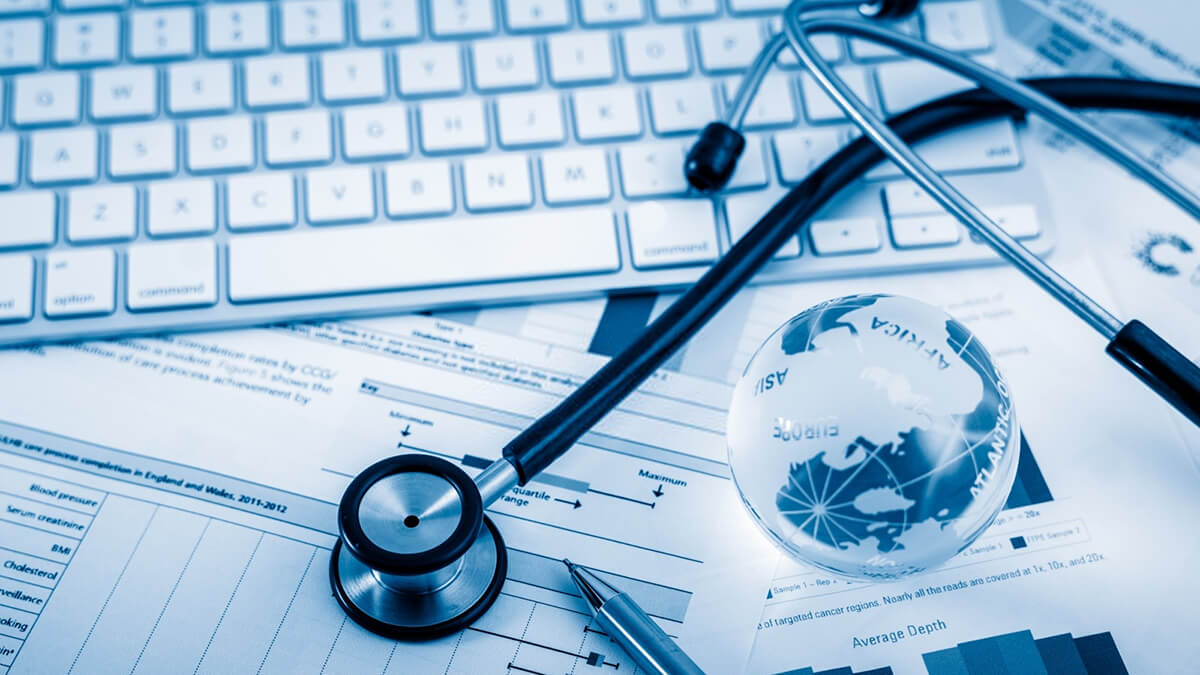Top Abilities Needed to Master Medical Administration Duty Today
Top Abilities Needed to Master Medical Administration Duty Today
Blog Article
Finest Practices in Medical Administration for Improving Performance and Minimizing Costs
In the ever-evolving landscape of medical care, the quest of best practices in clinical administration is critical for boosting performance and curbing expenses. By integrating sophisticated innovations such as electronic wellness documents and telemedicine, doctor can enhance procedures and boost client care. However, technology alone is not a remedy; maximizing resource allotment and fostering collaborative communication among care teams are similarly important (medical administration). As companies make every effort to stabilize high quality and cost, what methods should be prioritized to achieve these twin objectives? The response to these concerns hold the secret to a much more sustainable health care system.
Leveraging Advanced Innovation
In today's rapidly advancing medical care landscape, leveraging advanced technology is no much longer optional yet important for efficient clinical administration. The assimilation of electronic remedies into health care systems has actually changed the way centers operate, simplifying processes and boosting individual care. Electronic Health Records (EHRs) are pivotal, supplying extensive person data that can be accessed instantaneously by licensed workers, therefore decreasing redundancy and minimizing mistakes. By streamlining individual info, EHRs get rid of the requirement for troublesome documentation and help with smooth interaction among healthcare service providers.
Telemedicine is an additional technological advancement that has revolutionized individual interaction. It supplies ease for both individuals and healthcare experts by making it possible for remote assessments, which can minimize the requirement for in-person brows through and enhance consultation scheduling. Furthermore, telehealth platforms can expand medical care accessibility to rural or underserved locations, connecting spaces in care distribution.
Additionally, making use of Expert system (AI) and maker discovering is ending up being progressively prevalent in predictive analytics, permitting for early discovery of possible health concerns and even more informed decision-making. These innovations, when incorporated properly, can improve analysis precision and personalize client treatment plans, eventually leading to boosted health care outcomes and operational effectiveness.
Optimizing Source Allowance
By purposefully handling resources such as employees, equipment, and funds, medical care facilities can considerably boost their functional performance, enhance person outcomes, and reduce unnecessary expenditures. The very first action in enhancing resource allowance involves performing a detailed assessment of present assets and recognizing locations where resources might be underutilized or exhausted.
Focusing on resource allotment based on patient requirements and solution demands is important. Executing flexible staffing designs can also maximize labor resources by adjusting workers allotment in reaction to varying client volumes.
Financial sources need to be carefully kept track of and allocated with strategic foresight to sustain both temporary functional needs and lasting institutional goals. This consists of investing in training programs that enhance team proficiencies and embracing energy-efficient techniques that decrease functional expenses (medical administration). Inevitably, an enhanced resource allocation method promotes a lasting healthcare setting that is responsive, effective, and financially prudent
Streamlining Workflow Processes
When medical care facilities purpose to enhance functional performance, streamlining workflow processes comes to be an essential emphasis. Reliable operations lessen redundancy, remove unnecessary steps, and improve sychronisation amongst healthcare professionals. This technique not just speeds up solution shipment but additionally boosts the quality of individual care.

Following, technology assimilation plays a significant role in enhancing operations. Carrying out digital health records (EHRs) and computerized doctor order entrance (CPOE) systems decreases original site documents, decreases human error, and makes certain info comes to all relevant employees. In addition, leveraging telemedicine systems can simplify individual examinations and follow-ups, reducing the pressure on physical infrastructure.

Inevitably, structured operations lead to cost reductions and improved patient contentment, fostering an extra sustainable health care atmosphere.
Enhancing Data Monitoring
Structure upon streamlined process, enhancing data administration becomes an important element ahead of time healthcare administration. Efficient information administration systems are vital for preserving accurate person records, boosting decision-making, and guaranteeing conformity with regulative requirements. By applying durable information administration solutions, health care centers can enhance the top quality of person care while all at once decreasing operational expenses.
One secret aspect of boosting information monitoring is the integration of sophisticated electronic health and wellness record (EHR) systems. These systems help with the seamless exchange of client details throughout different divisions, reducing duplication of tests and minimizing mistakes. A well-designed EHR system sustains information analytics, allowing doctor to identify trends and make informed decisions concerning client care.
Moreover, securing individual information is vital. Adopting extensive cybersecurity actions, including encryption and normal audits, makes sure the honesty and discretion of sensitive information. This not just secures people yet additionally maintains the web organization's online reputation.
Investing in staff training is an additional essential variable. Informing medical care specialists on data monitoring methods improves their capability to properly make use of modern technology, resulting in enhanced client outcomes. To conclude, improving information administration through advanced modern technology and thorough training is crucial for achieving performance and price decrease in medical administration.
Fostering Collaborative Interaction
A vital element in progressing clinical administration is fostering collaborative interaction among health care professionals. Efficient communication is extremely important for making sure smooth individual treatment, maximizing treatment outcomes, and decreasing mistakes. By encouraging open discussion and control throughout multidisciplinary groups, medical care companies can improve their operational effectiveness and reduce unnecessary expenses.
Central to this method is the combination of interaction modern technologies such as electronic wellness documents (EHRs) and safe and secure messaging platforms, which assist in the rapid exchange of important client info. These tools allow doctor to gain access to and share information in genuine time, making certain that all employee are informed and lined up in their decision-making procedures. Moreover, normal team conferences and interdisciplinary rounds can additionally advertise a culture of cooperation and liability.
Training programs concentrated on boosting communication abilities are likewise vital. These programs can aid staff develop the capacity to communicate details clearly and listen actively, thus lowering misunderstandings and cultivating an encouraging workplace. Additionally, adopting standardized interaction protocols, such as SBAR (Situation, Background, Analysis, Referral), can streamline the exchange of details, guaranteeing that critical information are shared succinctly and effectively. Inevitably, promoting collective communication leads to boosted medical care delivery and price financial savings (medical administration).

Verdict
Incorporating advanced technology, such as electronic health records and telemedicine, alongside optimized resource allowance and structured process processes, is crucial for improving efficiency in medical management. Efficient information monitoring and promoting collective interaction amongst health care groups are important for lessening redundancies and boosting care high quality. By prioritizing preventative care and engaging in quality enhancement efforts, health care organizations can achieve considerable price financial savings and improved person outcomes, thus making sure sustainable healthcare delivery in a progressively complex setting.
Report this page